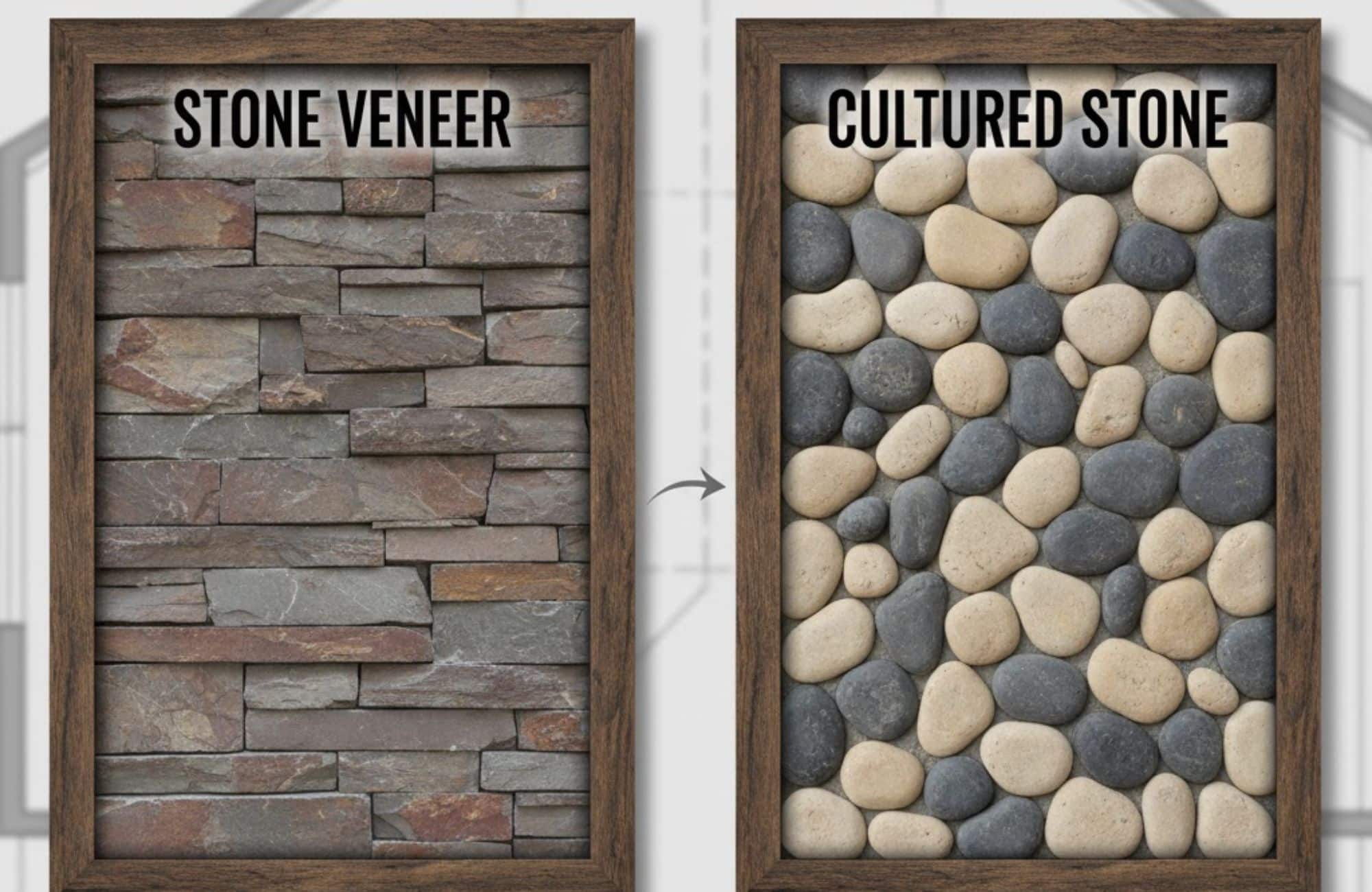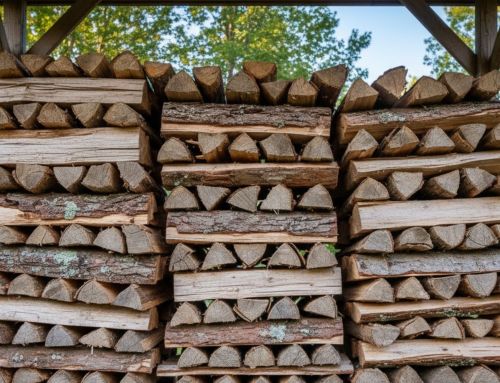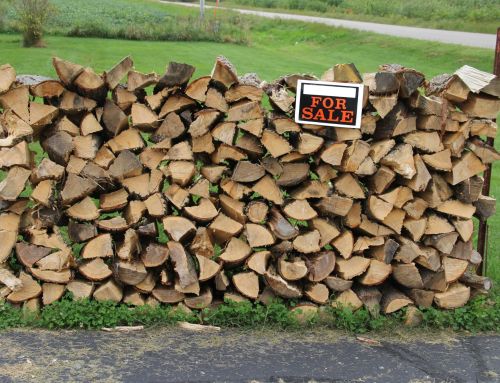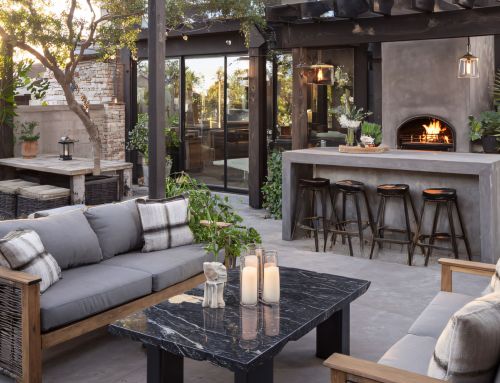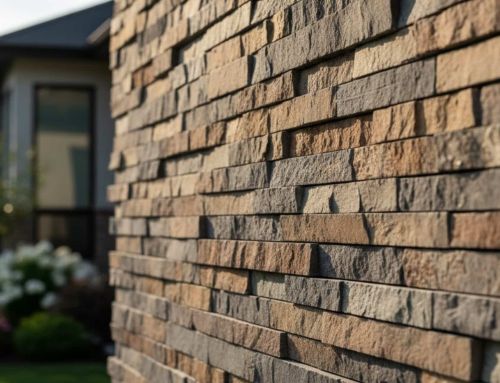If you’re considering stone veneer for your home or commercial space, stone veneer cultured stone is an excellent choice. This manufactured alternative to natural stone blends the beauty of real stone with the durability, affordability, and easy installation of modern materials. Whether enhancing your home’s exterior, creating a stylish fireplace, or designing an elegant interior wall, stone veneer cultured stone offers a versatile solution that can provide inspiration for your next project. It adds value and character to any space. With a range of textures and colors available, you can easily customize the look. Cultured stone fits perfectly with traditional, contemporary, or rustic architectural styles.
In this guide, we’ll explore everything you need to know about cultured stone veneer. We’ll cover its benefits, including cost-effectiveness, light weight, and low maintenance. We’ll also provide a step-by-step installation process for both residential and commercial settings. Additionally, we’ll compare cultured stone to natural stone to highlight key differences and help you decide which option is best for your project. At Old Station Outdoor & Landscape Supply, we offer a wide selection of cultured stone veneer options to elevate any space.
What is a Cultured Stone Veneer?
Cultured stone veneer, also known as manufactured stone veneer, is a lightweight alternative to natural stone, designed to replicate the look and texture of real stone without the high cost and weight. It’s made from a combination of concrete, natural aggregates, and color additives to mimic the appearance of traditional stone.
This product is molded into a variety of stone profiles, such as fieldstone, ledgestone, and cobblestone. This allows homeowners and contractors to select the perfect style for their design. The process involves casting the veneer from molds made from real stones. This means you can enjoy the aesthetic benefits of authentic stone without the challenges that come with installation and maintenance. While cultured stone is designed to look and feel like natural stone, it’s more affordable, easier to install, and suitable for both interior and exterior applications.
Key Benefits of Cultured Stone Veneer
When choosing materials for your home or commercial project, it’s essential to weigh the pros and cons. Here are the key benefits of cultured stone veneer that make it a popular choice. This showcases the meticulous attention to detail in its design and manufacturing.
- Cost-Effective: Cultured stone is significantly less expensive than natural stone. The lower material cost and easier installation process mean you can achieve the same luxurious look for a fraction of the price.
- Versatility in Design: With a wide variety of colors, shapes, and textures available, you can easily customize the look of your project. From rustic fieldstone to sleek ledgestone, cultured stone veneer suits many different architectural styles.
- Lightweight: One of the biggest advantages of cultured stone is its lighter weight. It’s easier to handle, reducing transportation costs and making installation faster and less labor-intensive than natural stone.
- Durability: Manufactured stone is designed to withstand the elements, making it a durable choice for exterior applications. Its resistance to cracking, chipping, and fading ensures it retains its beauty over time.
- Low Maintenance: Unlike natural stone, which often requires sealing and other maintenance, cultured stone veneer requires little upkeep. Regular cleaning with soap and water is typically sufficient to keep it looking new.
Cultured Stone Veneer vs. Natural Stone
When it comes to choosing between cultured stone veneer and natural stone, both have their advantages. However, understanding the differences will help you make the best decision for your project.
Cost Comparison
Cultured stone veneer is much more affordable than natural stone. While natural stone can be expensive due to its quarrying process and labor-intensive installation, cultured stone offers a similar look at a fraction of the price. The cost savings on materials and installation make cultured stone a cost-effective solution for homeowners looking to create their dream home and businesses alike.
Durability & Maintenance
Natural stone is known for its durability, but it requires regular maintenance, such as sealing, to protect it from the elements. On the other hand, cultured stone veneer is less porous. This makes it more resistant to moisture and staining, especially when combined with trim stones. It also doesn’t require sealing, which reduces long-term maintenance costs.
Aesthetic Appeal
While cultured stone veneer can closely mimic natural stone, the texture and depth of real stone are difficult to replicate perfectly. However, modern manufacturing techniques have made cultured stone veneer incredibly realistic. This provides many ideas for its use in various styles, from rustic to contemporary.
Comparison Table: Cultured Stone vs. Natural Stone
| Feature | Cultured Stone Veneer | Natural Stone |
|---|---|---|
| Cost | More affordable | Higher cost |
| Weight | Lighter | Heavier |
| Durability | Very durable | Extremely durable |
| Maintenance | Low maintenance | Requires sealing and care |
| Aesthetic Quality | High, but slightly less depth | Authentic and varied |
How to Install Cultured Stone Veneer
The installation of cultured stone veneer is straightforward, but proper preparation is essential for ensuring a long-lasting, visually appealing result. At Old Station Outdoor & Landscape Supply, we provide all the materials and expertise you need for a successful installation. Here’s a step-by-step guide:
Step 1: Prepare the Surface
The surface where you will apply the stone must be clean, dry, and free of debris. If you’re applying it to a wall, make sure the surface is smooth and stable. If necessary, apply a bonding agent to enhance adhesion.
Step 2: Apply Mortar or Adhesive
Use a high-quality mortar or adhesive specifically designed for cultured stone veneer. Apply a thin layer to the surface, ensuring it is evenly distributed.
Step 3: Position the Stones
Start at the bottom and work your way up, laying the stones in a pattern that suits your design. Cultured stone comes with interlocking edges, making it easier to align each piece. Tap gently with a rubber mallet to ensure the stones are firmly in place.
Step 4: Grout and Seal
Once all the stones are installed, grout the joints with a grout bag or trowel, ensuring that the lines are filled evenly. Finally, seal the surface with a protective coat to ensure longevity.
Common Mistakes to Avoid During Cultured Stone Veneer Installation
Installing cultured stone veneer is a DIY-friendly project, but common mistakes can affect the final result. One common error is incorrect surface preparation. The surface must be level, clean, and dry for proper adhesion. Failing to do so can lead to poor results.
Another mistake is using the wrong adhesive. Always use mortar or adhesive designed specifically for cultured stone veneer. Generic adhesives may not bond properly. Over-grouting is also a common issue. Too much grout can make joints look uneven. Apply grout sparingly and wipe away excess before it hardens.
Maintenance and Care for Cultured Stone Veneer
One of the major advantages of cultured stone veneer is its low maintenance needs. Here are some simple tips to keep your veneer looking its best:
- Regular Cleaning: Clean cultured stone veneer with a mild detergent and water. Avoid harsh chemicals that can damage the finish.
- Check for Cracks: Inspect your stone veneer periodically for any signs of cracking or damage. Repair any small cracks promptly to prevent further issues.
- Sealing: Although cultured stone doesn’t require sealing like natural stone, you may want to apply a protective sealant every few years to preserve its look and ensure water resistance.
Conclusion
Cultured stone veneer offers an affordable, durable, and aesthetically versatile option for homeowners and contractors. Whether you’re building a new home, remodeling your exterior, or designing an interior feature wall, it provides a cost-effective alternative to natural stone with minimal maintenance. Its variety of textures and colors makes it suitable for any architectural style, from traditional to modern. This offers a unique aesthetic while also providing enhanced durability and resistance to weather conditions.
At Old Station Outdoor & Landscape Supply, we offer a wide selection of cultured stone veneer options tailored to meet your project needs. With a range of colors, textures, and profiles, including a limestone option, we make it easy to find the perfect fit for both residential and commercial applications. Our expert team is here to guide you through the selection and installation process to ensure your project is a success. Contact us today and elevate your space with the timeless beauty and practicality of cultured stone veneer.
FAQs
How to install cultured stone veneer?
To install cultured stone veneer, first, prepare the surface by ensuring it is clean, dry, and level. Then, apply a bonding adhesive or mortar specifically designed for cultured stone veneer and press the stones into place. Finally, grout the joints and allow the adhesive to cure for proper adhesion and durability.
What is cultured stone veneer?
Cultured stone veneer is a manufactured product designed to mimic the look of natural stone. It’s made from a mixture of concrete, natural aggregates, and color additives, which are molded to replicate real stone textures and colors. This lightweight and cost-effective alternative is commonly used for both interior and exterior applications.
What is the difference between cultured stone and stone veneer?
The primary difference between cultured stone and stone veneer is that cultured stone is a manufactured product, while stone veneer can refer to both natural and artificial stone. Cultured stone is lighter and more affordable compared to natural stone veneer. Additionally, cultured stone often offers more variety in colors and textures due to its manufacturing process.
How much does cultured stone veneer cost?
The cost of cultured stone veneer typically ranges from $6 to $15 per square foot, depending on the style and brand. This makes it a more affordable option than natural stone veneer, which can be much pricier while still offering a classic charm. Additional costs for installation and materials may also apply, but it remains a cost-effective choice for enhancing your space.

